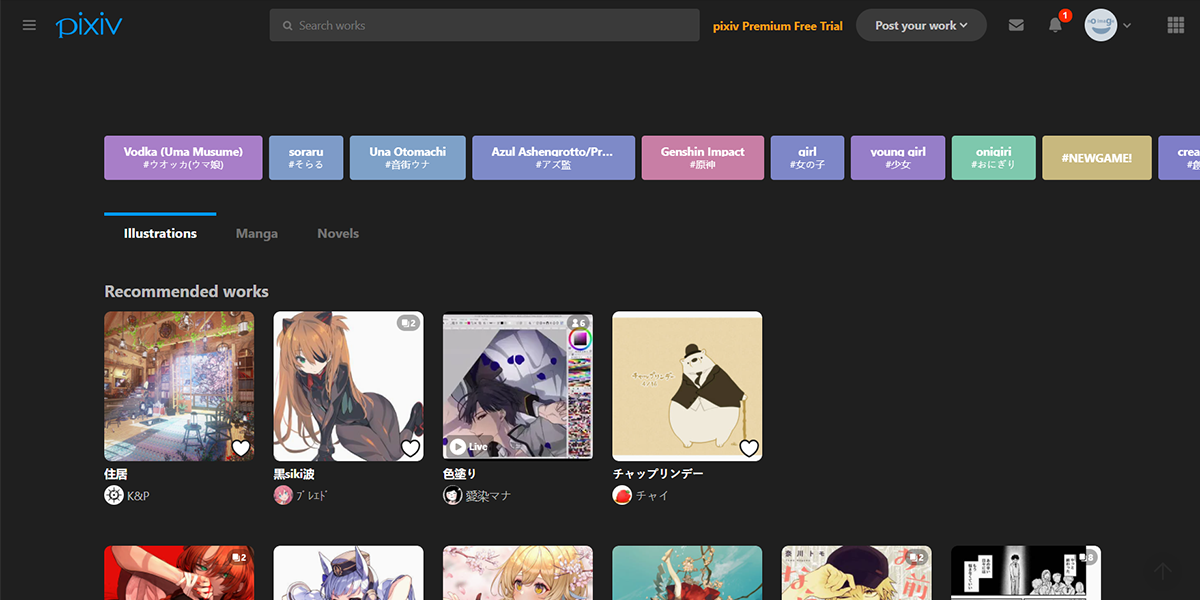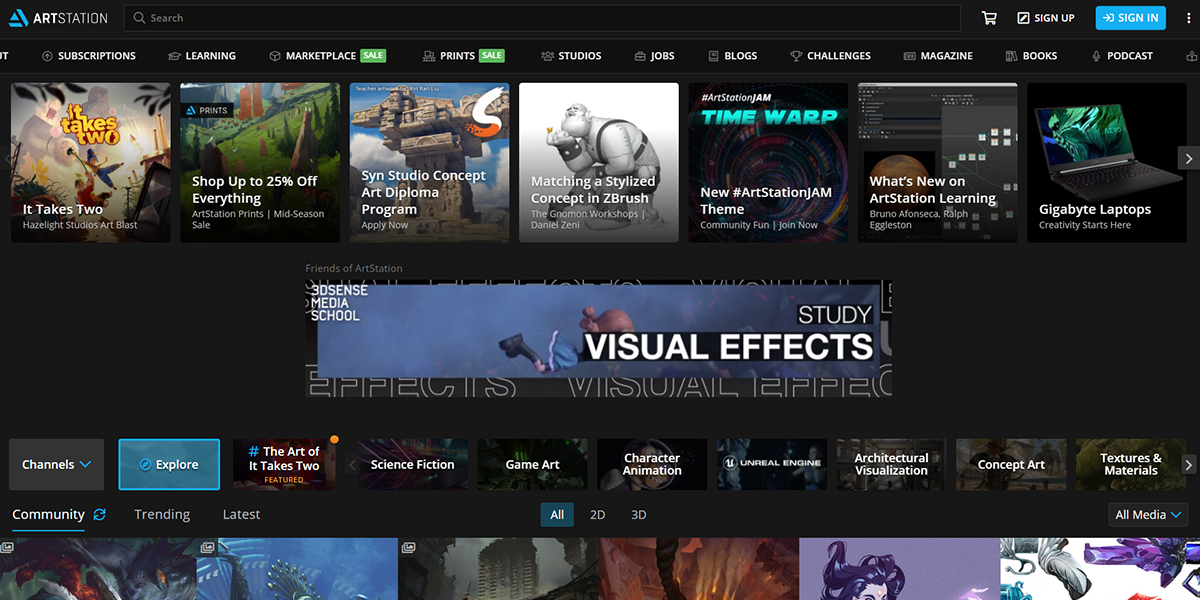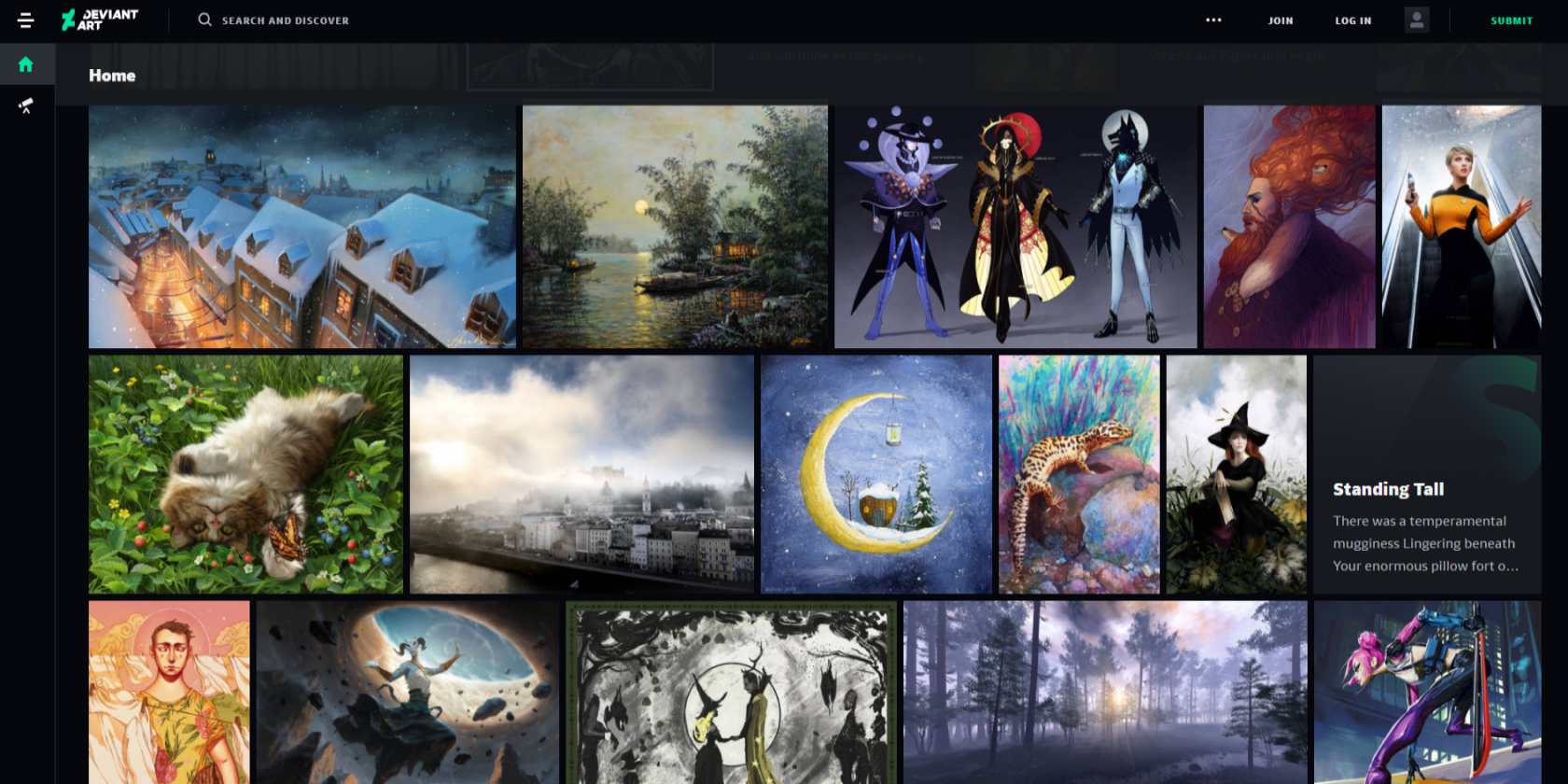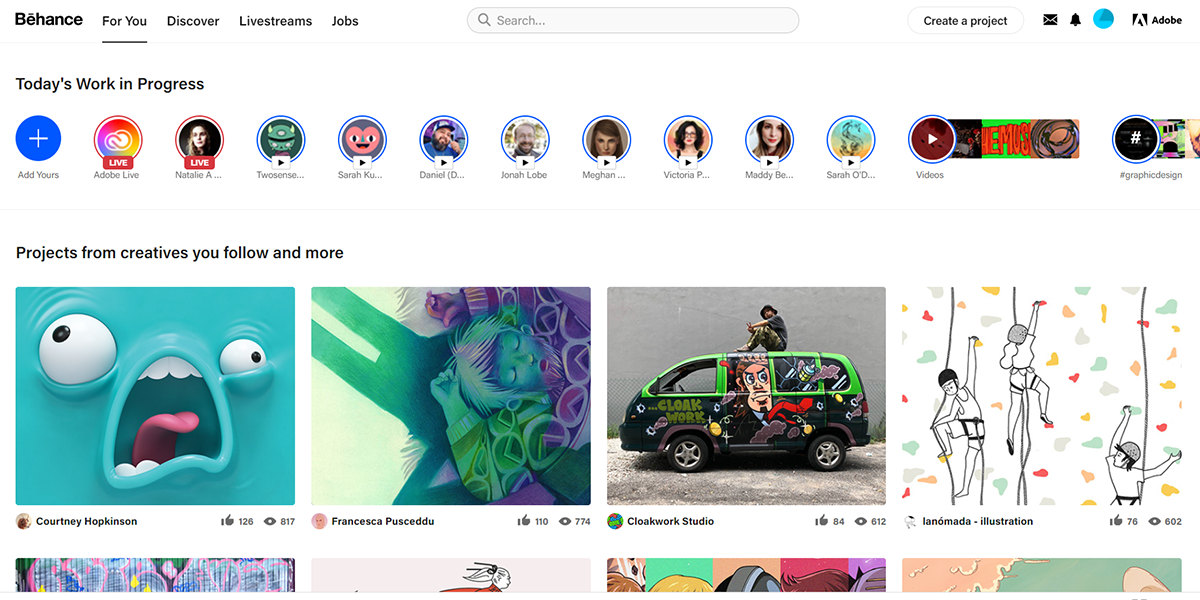Whether you're looking for somewhere to host your digital art portfolio or simply want to share your latest artworks, it can be difficult to choose a website to upload to. Or at least, it definitely is more so than before, now that art websites aren't bubbling with as much excitement as they used to be.
You know that each site has its pros and cons, but it's hard to figure out what those are unless you make an account and see for yourself. Don't worry if you don't have time for that—we've got your back. Here are the websites we recommend for sharing digital art, and why you might want to consider them.
1. Pixiv

If you were around when the online art scene was ridiculously active, chances are that your art style is influenced by anime and/or manga in some way. Otaku culture began its slow sneak into mainstream media back then, and Pixiv is a great home for artists that fall in that category.
Pixiv started as a small online community based in Japan, but has since grown into a site with over 50 million artists from all around the world. It's often praised for having "better" art overall when compared to other art-sharing platforms. This could perhaps be attributed to the fact that most professional Japanese illustrators choose Pixiv as their portfolio site.
The site used to be infamous for its messy navigation and gallery setup. Netizens found humor in knowing that the site was still gaining traction even when it was a headache to use. Since then, most of Pixiv's old overcrowded design has been replaced with a sleeker interface, so there isn't much to complain about now.
2. ArtStation

ArtStation's rise to prominence comes in perfect timing with the growth of the video game industry. That's because the site is mainly geared towards creatives interested in video games and film animation (though it welcomes artists of all kinds). It's not uncommon for big-name companies in those industries to search for new recruits on ArtStation.
That said, ArtStation is definitely more of a platform than it is a community. You're much more likely to form business connections than you are to form ride-or-die online friendships. That's a dealbreaker for a lot of artists, especially if you're one to rely on feedback.
But you can't deny that ArtStation usually has content to deliver whenever there's a new art trend going around (like when it tried to get in on the NFT craze). It's working really hard to become the "new" DeviantArt; the standout platform that all artists should be on.
3. DeviantArt

DeviantArt is very much a platform you'd call "old faithful." Digital artists that have been on the scene for over five years have probably been on DeviantArt at one point or another. It's got everything you'd need: a place to display your works, a vast potential audience, commission features, and social spaces.
Having been around since 2000, DeviantArt is the launch point for many of today's biggest independent illustrators, such as Yue Wang (sakimichan), Wenqing Yan (yuumei), and Lois Van Baarle (loish). Unfortunately, the site probably doesn't have the power to propel new artists to those heights anymore.
The site still has a huge userbase, yet there isn't as much engagement as there once was. Most deviants these days seem to be the silent lurking type, which is why DeviantArt is no longer considered to be "the" platform to share art. It remains plenty useful, but it's in desperate need of an upgrade—one that consists of more than just a rebrand (which it did after being acquired by Wix in 2017).
4. Artfol
Artfol officially launched in April 2021, which makes it the youngest platform on this list. Artfol had the privilege of getting to see where the platforms before it failed, and was developed with the help of a lot of user feedback, so it gets right what a lot of other "aspiring-to-be-the-new-standard" platforms get wrong.
DeviantArt and ArtStation have received criticism in the past for featuring the same artists on their front pages, which is probably why Artfol has decided to ditch "complex algorithms" altogether. It promises that all its users have equal opportunity to be seen.
Artfol also keeps personal metrics private (only you can see your Like counts), and offers fun in-app Challenges. Unfortunately, it's currently limited to a mobile app that—because of the sudden influx of new users—runs pretty slow. That should change soon, but only time will tell.
Download: Artfol for Android | iOS (Free, in-app purchases available)
5. Behance

Behance is to art-sharing websites what LinkedIn is to social media networks. It's less suited for hobbyists and is built for those willing to pursue digital art as a profession. There's a Discover feed you can sift through, and even dedicated spaces for job hunting and live streams.
Scrolling through the website can seem intimidating at first, as Behance has no shortage of talented individuals. But that also means it's a really good place to receive constructive criticism—which is the best part about it. When the artists aren't fighting for the same job opportunities, they're helping each other improve.
The platform is owned by none other than the big creative tech conglomerate that is Adobe. Thankfully, that doesn't mean that you need a Creative Cloud subscription to use Behance. You will need to create an Adobe ID, though.
6. Instagram
Instagram is a hesitant entry on this list. It undoubtedly can get your name and art out there if you know how to maximize your exposure, but such a feat is much harder than it would be on any other platform.
Why? Well, Instagram welcomes images and videos of a variety of things. There are artists, of course, but there are also a bunch of photos of folks' everyday lives. It's like if you were a traditional painter and you chose to hang your piece in the middle of a shopping mall instead of a museum. The consumers are there for reasons other than appreciating art.
Still, hashtags on Instagram are more powerful than some people expect. #artistsoninstagram and #artoftheday, for instance, are great tags to use when you're not sure if you want to tag a specific theme, tool, or technique.
Download: Instagram for Android | iOS (Free, in-app purchases available)
Share Your Digital Art With the World
When choosing an art website, there's a lot to consider. What kind of art are you sharing? Who do you want to share it with? Did you want to build a following, or find a community and have a very interactive experience?
These are the sorts of questions you need to ask before you make your choice (or choices— no one said you had to limit yourself!).
Comments
Post a Comment